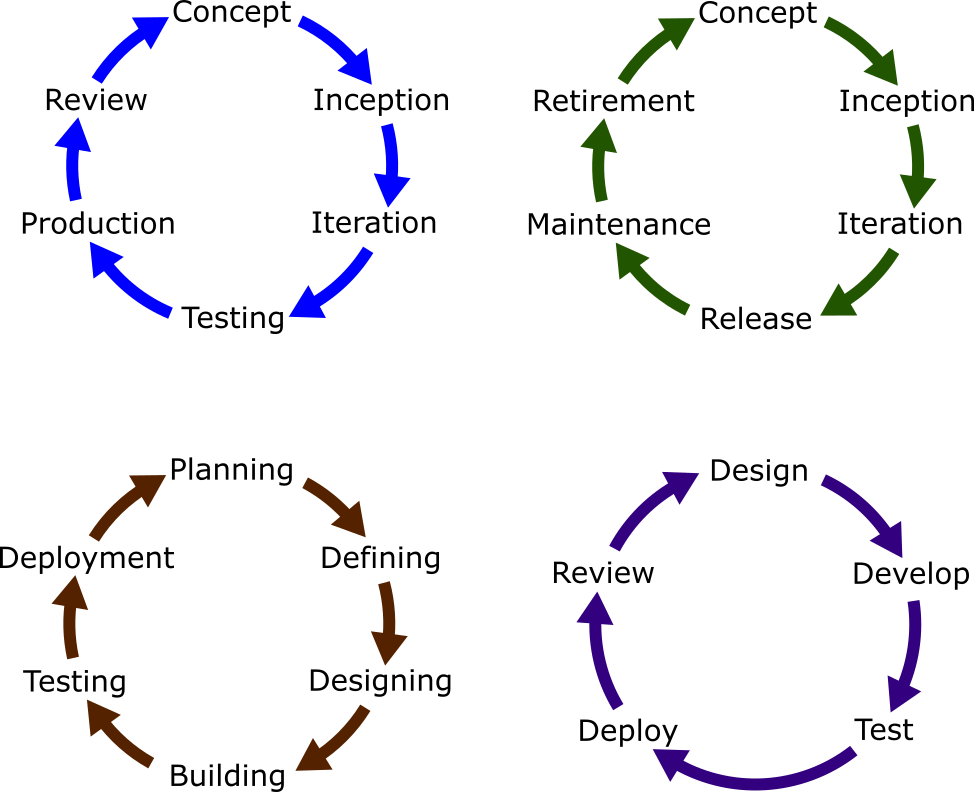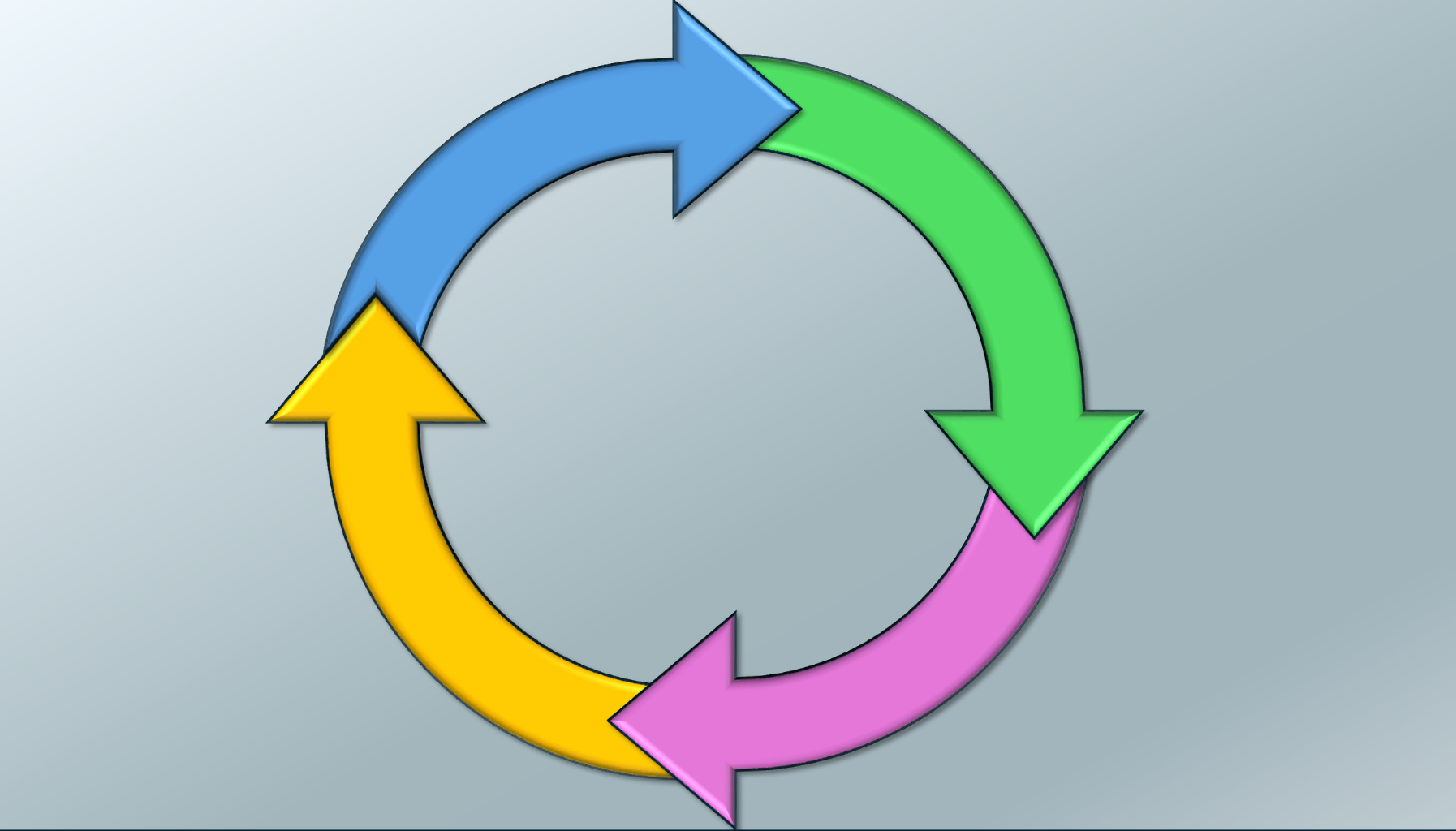The often-overlooked feedback loop
Introduction
Most discussions about the Software Development Life Cycle (SDLC) revolve around phases, iterations, and feature delivery. However, beyond these well-known cycles exists a broader Circle of Influence—a feedback loop connecting the Product, Customer, Company, and Development Team. Unlike traditional SDLC cycles, this influence loop doesn’t just impact the codebase but shapes long-term product success, customer satisfaction, and even career growth.
People often overlook this lagging indicator feedback cycle because its effects unfold gradually but become profoundly impactful over time.
Understanding this concept lays the foundation for future discussions on how even low-level design and development choices have high-level and personal implications.
I stress the significance of high-quality software products and their overall impact on customer satisfaction, company reputation, long-term success, and personal consequences.
The Well-Known Cycles
SDLC methodologies are often visualized as cycles, emphasizing iteration and delivery. As mentioned, these models primarily focus on feature development rather than long-term impact.
Depending on the context of the discussion, you may see diagrams like these

These models prioritize productivity, rapid response to customer needs, and feature-driven progress. However, beyond this immediate development and delivery scope lies a more expansive feedback loop encompassing the Product, Customer, Company, and Team. This broader impact cycle is crucial, as each stakeholder influences and is influenced by the others, creating either a virtuous cycle of growth and satisfaction or a detrimental spiral leading to decline. Paying attention to these broader interactions early and often is essential for sustaining long-term success and fostering a thriving development ecosystem.

Understanding the Circle of Influence Roles
In any software development environment, key roles shape the Circle of Influence:
- Product: The software being built and delivered.
- Team: The engineers and support teams developing it.
- Company: The organization that funds and distributes the product.
- Customer: The external or internal users benefiting from the software.
In a profit-center model, the customer is an external buyer; in a cost-center model, the customer is an internal business unit. Regardless of structure, software quality impacts customer sentiment, which affects company reputation and team morale, creating either a positive or negative feedback loop.
The intricate relationship between a working team, the company, the software product, and the customers creates this “Circle of Influence.” The quality of the software products significantly impacts customer satisfaction and, in turn, the company’s reputation and success. I explore how each component within this circle influences others and how maintaining a relentless focus on quality can lead to a thriving, self-sustaining ecosystem.
Quality Software Products: The Catalyst
At the heart of this circle lies the software product itself. A high-quality product, free from bugs and performance issues, naturally garners positive customer feedback. Satisfied customers are more likely to endorse the product through word of mouth, recommend the company to others, and continue investing in additional functionalities and products your company offers.
In contrast, a product plagued by bugs or performance issues fuels dissatisfaction, negative reviews, and long-term reputational damage.
Focusing solely on delivering features that meet immediate needs often produces products that shine brightly briefly but may falter over time.
Focusing solely on delivering features that meet immediate needs often produces products that shine brightly briefly but may falter over time. While meeting current demands is essential, it is equally important to envision the product’s future trajectory. Software products typically undergo a long lifecycle, during which they must evolve to accommodate new features, performance enhancements, technology refactorings, and inevitable bug fixes. A product with short-term goals may lack the robustness and flexibility required to adapt to these future changes, leading to increased maintenance costs, technical debt, and a diminished user experience.
Quality measurements in software engineering extend far beyond what customers can immediately perceive. Code maintainability, scalability, and extensibility are critical to ensuring the product can grow and adapt seamlessly. Investing in these areas from the outset can prevent a cascade of issues later, allowing for smoother integration of new features and technologies. Moreover, performance optimization and thorough testing are vital components of long-term quality, as they ensure the product remains efficient, cost-effective, and reliable under varying conditions. Companies can create software that stands the test of time by considering immediate needs and future requirements, fostering sustained customer satisfaction and business success.
Customer Sentiment: The Ripple Effect
Customer sentiment plays a pivotal role in the circle of influence. Positive customer experiences lead to a strong reputation, increased loyalty, and a willingness to engage further with the company’s offerings. Customers who are pleased with the product become brand advocates, spreading the word and bringing new business opportunities. Conversely, unhappy customers can deter potential clients and damage the company’s reputation through negative reviews and feedback. Thus, the state of the software product directly impacts customer sentiment, which in turn influences the company’s success.
However, short-term customer satisfaction can quickly fade if new features take a long time to deliver, new bugs repeatedly show up, license fees constantly increase, performance starts suffering, and/or competitor products offer relief from these issues and possibly at a reduced cost. Customers today expect rapid innovation and seamless performance from the software they use. If the product fails to evolve and adapt swiftly to changing needs, customers may become frustrated and lose trust in the company’s ability to meet their expectations. Delays in feature releases can make the product appear stagnant, and frequent bugs can erode user confidence, leading to dissatisfaction and a tarnished reputation.
Moreover, constant hikes in license fees without a proportional increase in value can lead to customers seeking alternatives. Performance issues can be particularly damaging, as they directly impact the user experience, causing delays and inefficiencies in their workflows. In contrast, if competitor products offer more reliable, faster, and cost-effective solutions without the same recurring issues, customers may be tempted to switch, even if they have been loyal for years.
Maintaining short-term satisfaction is essential, but it should not come at the expense of long-term reliability and performance. Companies must balance immediate customer demands with strategic investments in quality and innovation to sustain growth and customer loyalty.
The Company’s Role: Nurturing the Teams
Customer sentiment profoundly affects the company’s state, influencing the working teams, including engineers, product owners, and architects. When a company is thriving, it often leads to increased investments in its workforce. This includes better pay, enhanced training programs, adoption of new tools and technologies, and a general focus on employee satisfaction. A company that values and invests in its employees creates an environment where teams can innovate and excel in their roles.
However, the landscape changes dramatically when customer sentiment turns negative. When customers begin to express dissatisfaction or, worse, start leaving for competitors, the atmosphere within the company shifts palpably.
The company has shifted sharply from future-oriented innovation to immediate damage control. The pressure on the engineering teams intensifies as they must deliver bug-free updates quickly to mitigate the negative sentiment and regain customer trust. Investments in new tools and technologies are often scaled back, with priority shifted to resolving existing problems.
In such situations, interesting new initiatives are put on hold, and the primary focus becomes patching up the existing product. The company might also find attracting and retaining talented engineers challenging as the environment becomes less conducive to creativity and innovation.
Moreover, emphasizing immediate fixes over long-term enhancements can lead to a cycle of short-term solutions that fail to address underlying issues. This reactive approach can cause further stress within the teams, potentially leading to burnout and decreased morale.
Strategic investments in quality and innovation are crucial to sustaining growth and customer loyalty. However, when customer sentiment is negative, the company must balance immediate customer demands with maintaining a robust and adaptable product. This requires a delicate equilibrium, ensuring short-term actions do not compromise long-term success.
Empowered Teams: The Backbone of Quality
A well-supported, happy, skilled team will likely produce exceptional software products. Adequately equipped and well-trained employees can focus on creating performant, responsive, reliable, and cost-effective solutions. Satisfied employees tend to be more engaged, motivated, and committed to their work, leading to higher productivity and better-quality outcomes. The company’s investment in its workforce pays off in the form of superior products, which, in turn, positively impacts customer satisfaction.
The Insidious Nature of Compromise: A Slippery Slope
“The road to ruin is paved with good intentions,” and in software development, this often begins with small compromises. Under pressure to ship features or fix urgent bugs, teams may take shortcuts that initially seem harmless—a quick patch here, a workaround there—until suddenly, the product becomes a fragile web of technical debt.
The danger lies in the repetition of such compromises. Initially, they may appear as practical solutions to pressing problems, but over time, they erode the integrity of the codebase. Each seemingly minor deviation from best practices accumulates, and before long, the product’s architecture becomes convoluted and complex to maintain. What was once a sleek, well-structured system becomes the quintessential “ball of mud,” held together by an increasing reliance on quick fixes and anti-patterns.
This pattern of compromise affects the product’s maintainability, performance, and scalability. As technical debt mounts, the team struggles to keep up with new bug fixes and feature deliveries. The cycle becomes vicious: the more the team tries to patch up the issues, the more they inadvertently introduce new problems, further exacerbating the situation.
Teams must remain vigilant and committed to maintaining high quality to prevent this descent into chaos. Diligence is key; allowing even minor lapses can set a precedent that may be difficult to reverse. Adhering to established best practices and patterns is not merely a recommendation but a necessity for sustaining the product’s health and robustness.
Empowering the team with the right tools, ongoing education, and a culture that prioritizes quality above all else is essential. By fostering an environment where every member understands the long-term implications of their choices, the team can collectively guard against the insidious nature of compromise. Only through unwavering dedication to quality can they ensure that their well-architected system remains resilient, adaptable, and capable of evolving alongside market demands.
Coming Up Next: Closing the Loop
In this post, I have briefly introduced the critical importance of strategic investments in quality and innovation to sustain growth and customer loyalty. I have also discussed the concept of empowered teams as the backbone of quality and examined how even minor compromises can lead to a slippery slope of technical debt, adversely affecting product maintainability, performance, and scalability.
In the next post, I will delve deeper into the “Circle of Influence” concept, exploring the dynamics of the feedback loop, its impact on growth and innovation, how decisions today have a personal and professional impact on our future selves and strategies to maintain a positive, beneficial growth spiral.

